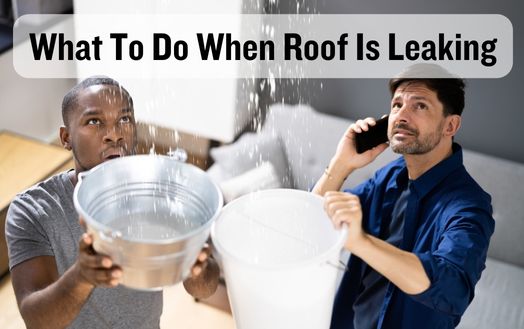
As I sat in my living room, enjoying a cup of tea and watching the rain pour outside, I couldn’t help but notice a steady drip coming from the ceiling. Panic set in as I realized that my roof was leaking, and I knew I had to act fast.
But where should I start? What steps should I take to tackle this daunting problem?
Well, fear not, because in this discussion, I will guide you through the necessary actions on what to do when roof is leaking. Trust me, you won’t want to miss out on these invaluable tips to protect your home and belongings.
To fix a leaking roof, I must assess the damage. Leaks in your home can cause significant water damage, threatening its structure. I’ve developed an innovative way to efficiently assess damage and plan a targeted repair strategy.
The leak source must be found first. This may require a thorough roof inspection for cracked or missing shingles, deteriorated flashing, or damaged vent and chimney seals. We can save time and resources by focusing on water entry points.
The severity of the damage must be assessed next. Do you have ceiling water stains or structural damage from the leak? By carefully inspecting the damaged areas, we can assess the damage and prioritize repairs. This novel method prioritizes the most pressing issues, preventing further damage and leaks.
I use advanced technology to assess water damage beyond visual inspection. Moisture meters and thermal imaging cameras help me find hidden moisture and urgent areas. These cutting-edge tools and traditional inspection methods allow us to assess the damage and create a customized roof repair plan.
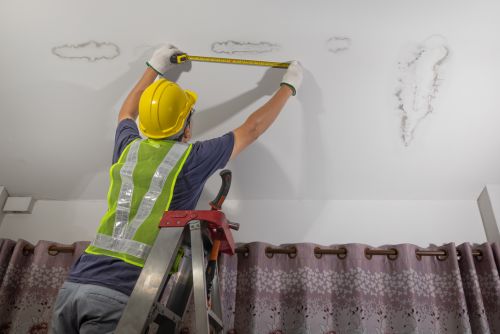
First, I carefully inspect the roof to find the leak. Finding the leak is essential to fixing it and preventing further roof and house damage. How to find the leak source:
Modern technology innovates in leak detection. Infrared cameras and moisture meters can find leaks and moisture buildup that aren’t visible. This cutting-edge leak detection equipment saves time and money.
A roof leak can be temporarily fixed with a patch. Leaking roofs require immediate action to prevent home damage. Temporary patches can help until a roofer arrives.
As mentioned in the previous subtopic, you must find the leak source to temporarily patch it. After finding the problem, gather roofing cement, a putty knife, and tarp or roofing felt for patching.
Clear the leaky area of debris and loose shingles. Use the putty knife to apply generous roofing cement to the affected area. Spread cement evenly for a watertight seal.
Next, cut a patching material slightly larger than the damage. Press the patch firmly onto the cemented area. Smooth out wrinkles and air bubbles for a tight seal.
This is only a temporary fix; professional roof repair is needed. To avoid mold and other health risks, fix the leak’s cause.
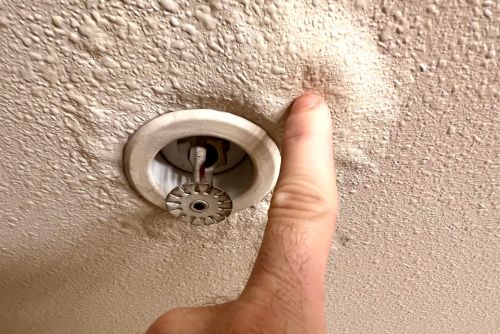
After temporarily patching the roof leak, remove any standing water. Standing water must be removed to prevent further water damage and repair the roof. Innovative ways to remove standing water from a leaking roof:
Prevent roof leaks from damaging your belongings. Water intrusion can cause costly or irreversible damage to your valuables. Here are some creative ways to protect your belongings from roof leaks.
Most importantly, inspect your attic regularly. Dampness, mold, or ceiling or wall discoloration may indicate water damage. Fix any problems immediately to avoid further damage. A water detection system in your attic can alert you to leaks and moisture buildup, so you can act quickly.
Take direct action to protect your belongings. Store valuable items like photos, documents, and electronics in plastic or waterproof bins. These containers prevent water damage to your belongings. Elevating furniture and other items off the floor reduces water damage.
Additionally, make sure your insurance policy covers roof leaks and water damage. Consider adding coverage if your policy has exclusions. Take pictures or videos of your belongings to make filing a claim and getting compensation easier.
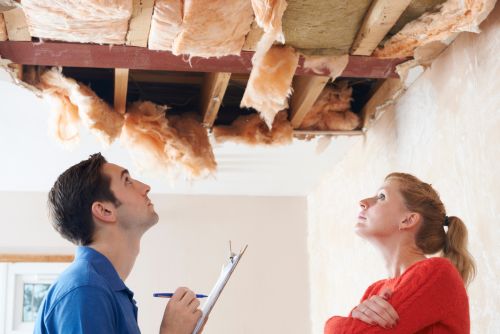
Protecting your investment from a leaking roof requires inspecting and documenting your belongings. Leaking roofs require immediate action to minimize damage. Innovative ways to document damage and streamline insurance claims:
First on what to do when roof is leaking, contact a professional roofer immediately to assess and repair the leaking roof. Roof issues require a roofing professional. DIY repairs may cause more damage or ineffective repairs, resulting in more expensive repairs.
Leaking roofs are serious issues. Water, mold, and structural damage can result from ignoring or delaying repairs. Contacting a professional roofer immediately can prevent these issues from worsening and get your damaged area treated.
A skilled roofer will inspect your roof to find the leak. Their expertise allows them to identify leak causes like damaged flashing or missing shingles. After finding the leak, they’ll explain the issue and suggest the best solution.
Sometimes a simple repair can fix the leak. A roof replacement may be needed if the damage is extensive or the roof is old and deteriorating. An experienced roofer can help you choose the best option for your situation.
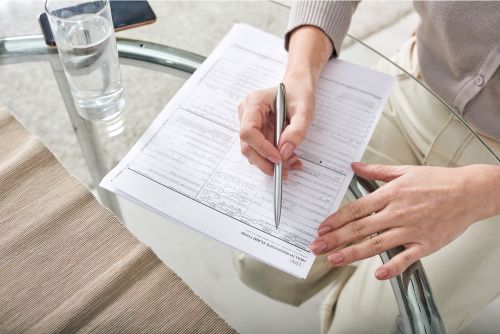
To get financial aid for a leaking roof, file an insurance claim. Consider these factors when filing an insurance claim:
Fix any roof maintenance issues to prevent leaks. Roofs need regular inspection and maintenance to last. By being proactive, you can avoid costly repairs and property damage.
Hire a professional roofer to inspect your roof first. They’ll identify issues and suggest repairs or replacements. This will keep your roof in good condition and prevent leaks.
Roof material selection is also crucial. Improved roofing technology has produced more durable and water-resistant materials. Selecting high-quality roofing materials can greatly reduce leaks and property damage.
Leak prevention requires regular maintenance. Clean your roof to avoid water pooling and seepage from clogged gutters and drains. Keep overhanging tree branches from damaging the roof by trimming them.
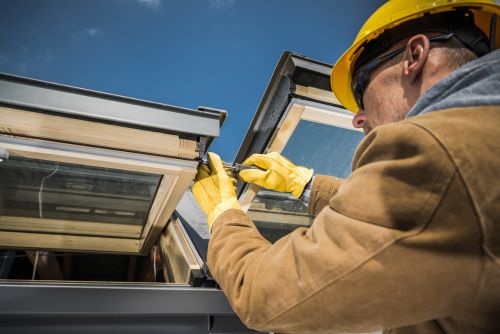
To prevent leaks and prolong roof life, inspect and maintain it regularly. A few simple steps can keep your roof in good condition and prevent costly repairs. Innovative roof inspection and maintenance methods:
You must inspect and maintain your roof to prevent leaks and extend its lifespan. These innovative steps will keep your roof in great shape, protecting your home from water damage and costly repairs.
When dealing with a leaking roof, it’s important to take immediate action to assess the damage, locate the source of the leak, and patch it temporarily. Removing any standing water and protecting your belongings are crucial steps.
Contacting a professional roofer and filing an insurance claim are essential for long-term solutions. To prevent future leaks, regularly inspect and maintain your roof. Remember, taking proactive measures can save you from costly repairs in the future. So now you already know what to do when roof is leaking.
I look for water stains on the ceiling or walls, dampness or mold in the attic, or ceiling dripping to see if my roof is leaking. These signs suggest a leak.
The issue must be addressed immediately to avoid further damage. Regular inspections and maintenance can spot leaks before they become major issues.
I can definitely fix a roof leak myself. It’s important to assess the severity of the leak first. If it’s a minor issue, like a loose shingle or a small hole, I can easily patch it up using roofing sealant or a patch kit.
However, for more complex leaks or larger damage, it’s best to consult a professional. But with some basic DIY skills and the right materials, I can tackle most roof leaks on my own.
Does homeowner’s insurance cover roof leaks? Leaking roofs are usually covered by homeowner’s insurance. You should review your policy to understand its coverage and exclusions. If your roof leaks, call your insurer and take pictures or videos. They will help you file claims and arrange repairs.
Well, it depends on various factors such as the extent of the damage and the availability of materials and labor.
In some cases, a roof leak can be fixed within a few hours or days, while more complex repairs may take several weeks. It’s essential to hire a professional roofer who can assess the situation and provide an accurate estimate of the repair timeline.
Common causes of roof leaks include:
These issues can lead to water seeping into your home, causing damage to the interior and potentially compromising the structural integrity of the roof.
It’s important to address these issues promptly to prevent further damage. Regular roof inspections and maintenance can help identify and resolve potential problems before they turn into costly leaks.